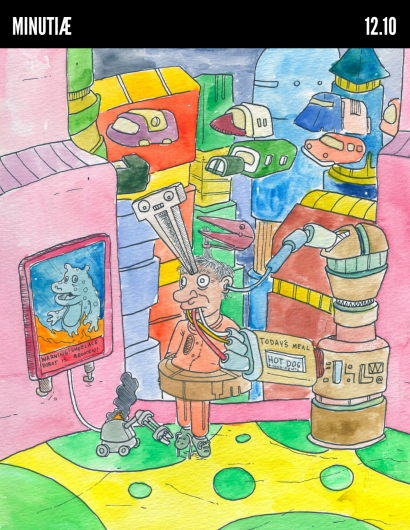On the Scoop: Zippers
by Danny Cohen
Time marches on, but some things stand still, and that’s why I recently went down to Greenhorn, to visit Galliger’s Zipper Repair, where Hank Galliger has been working for the last 64 years. Despite being a neighborhood landmark, not a single news story about it exists, curiously enough. I’m going to get to the bottom of its rich history, untold until now. I’m going to get the scoop.
“Who’s there?” Galliger slyly yells from the back room as I enter. The game of cat and mouse has begun. Inside are zippers of all different lengths and sizes; copper, bronze, aluminum, I assume are the materials used in the manufacturing. “Oh, yeah, I guess I’ve worked here since right after the war, I came back. My father had owned it. How can I help you?”
The only help I wanted was the only kind he wasn’t offering: the scoop. He was still playing coy, acting as if I were a regular customer. I explained whom I was and for wantance I had come: to get the scoop. “Sure, look around, I’ll be in the back if you need anything,” he explained, trying to brush me off from getting the scoop.
The zipper was the first truly modern fastening device. The first American zippers appeared toward the end of the American Industrial Revolution. At the same time, employers were looking ways to limit employee break time (buttons take longer than zippers in bathrooms), and the new machines allowed for rapid production (no longer were children’s tiny hands being caught while making the incredibly sharp metal teeth). Zippers represent our modern need to always be zipping around, thus why they are called zippers. But someone had already scooped this info. Time for me to get back to scooping.
Inside Galliger’s, I’ve decided the game is over. “Zippers have stayed the same pretty much since they began. Maybe the teeth are duller now because of plastic.” He was starting to lose his certainty. It was now time for me to zip to the bottom of the wonderfully rich stories behind this place.
“In the 70s, the neighborhood was getting real bad, but no one bothered us because we’d been here forever and were nice to everyone. When there were riots or burglaries, people decided to leave us alone.” But his eyes were telling a different story, shifting focus to the watch on his wrist.
“No, it wasn’t my father’s. My wife got it for me. I don’t know where.”
The scope of this gem was finally coming into view. The train had finally come. Destination: the scoop.
“Look, I don’t know why you’re here.” Scoop?
I was getting to the bottom of things. I begged him to go off the record, but he did not stray from his story.
“Have a nice day. Sorry I couldn’t be more helpful.” Sure you are, Galliger.
I made my way next door to Franklin’s Buttons & Dots, to talk to the proprietor Gregory Franklin. I was sure he would know something about the rich history of dress fastening.
“What are you saying about zippers? Look, do you want to buy something?” I ain’t buying, friend, only scooping. It was then that I heard the muffling underneath the floorboards.
I inquired as to what it was. “Look, guy, get out of here. You don’t want none of this.” I pulled up the floor to see a thirteen year old girl, dirty, tied up. What a scoop! ♦
